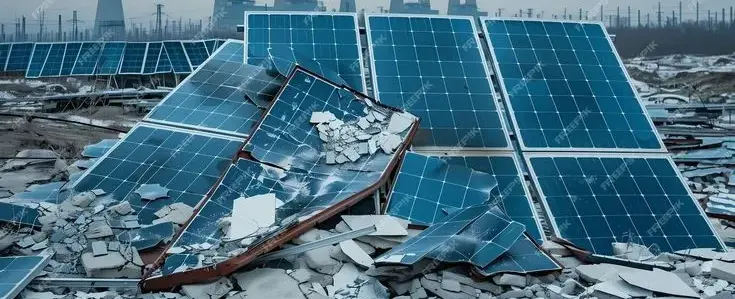How to Check Good Quality Solar Panels and Convert a Non-Inverter AC into an Inverter AC – Complete Beginner Guide
If you are planning to invest in solar panels or thinking about improving your air conditioning system by converting a non-inverter AC into an inverter AC, this guide is for you. We will explain both topics step by step, in simple language, so even beginners can understand. You will also learn how to identify good quality solar panels, types of panels, and whether converting your non-inverter AC is a good idea or not.
Let’s dive in.
How to Check Whether a Solar Panel is Good Quality or Bad Quality – Step by Step Guide
1. Understand the Basics of Solar Panels
Solar panels are designed to convert sunlight into electricity. They are commonly used in homes, businesses, and industries to reduce electricity bills and promote clean energy. But not all solar panels are created equal. Some panels offer high efficiency and long life, while others are poorly manufactured and may fail early.
2. Types of Solar Panels
There are mainly three types of solar panels available in the market:
Monocrystalline Solar Panels:
These panels are made from a single crystal of silicon. They have a uniform black appearance and rounded edges. Monocrystalline panels are known for their high efficiency, long life, and sleek look. They are ideal for locations with limited roof space.
Polycrystalline Solar Panels:
These panels have a blue color and square-shaped cells. They are made from multiple silicon crystals. Polycrystalline panels are more affordable but slightly less efficient compared to monocrystalline panels.
Thin Film Solar Panels:
These panels are lightweight and flexible. Thin film panels are mainly used in special applications where flexibility is required, but they have lower efficiency compared to crystalline panels.
Poly
crystalline
Mono
crystalline
3. Visual Inspection – First Step to Identify Quality
The first and simplest method to check solar panel quality is a visual inspection:
- Look for cracks on the glass surface
- Ensure there are no discolorations or spots on the solar cells
- The aluminum frame should be straight, without dents or bends
- The junction box on the backside should be sealed properly
Physical damage or poor build quality is an early sign of a low-quality panel.

4. Check Specifications on the Label
Every solar panel comes with a label at the back, displaying its technical specifications. Always check the following details:
- Wattage (e.g., 550W, 650W)
- Voltage at Maximum Power (Vmp)
- Current at Maximum Power (Imp)
- Open Circuit Voltage (Voc)
- Short Circuit Current (Isc)
Make sure these values match the manufacturer’s datasheet. Fake or low-quality panels often display incorrect or exaggerated specifications.
5. Multimeter Test – Quick Electrical Check
Using a digital multimeter, you can check:
- Open Circuit Voltage (Voc)
- Short Circuit Current (Isc)
Perform this test under bright sunlight and compare the results with the panel label. If the values are much lower, the panel is either defective or fake.
6. Ask for Certifications and Warranty
Good quality solar panels always come with:
- Product warranty of 10-12 years
- Performance warranty of 25 years
- International certifications like IEC 61215, IEC 61730, ISO standards
Avoid panels with no certifications or warranty, as they may fail prematurely.
7. Buy from Reputable Brands
Some globally recognized solar panel brands include:
- Longi Solar
- JA Solar
- Canadian Solar
- Trina Solar
- Jinko Solar
- REC Solar
In Pakistan, Inverex, Tesla Solar, and Sky Electric are also trusted names.
How to Convert a Non-Inverter AC into an Inverter AC – Detailed Guide
1. What is the Difference Between Non-Inverter and Inverter AC?
A non-inverter AC has a fixed-speed compressor that either runs at full speed or switches off to control room temperature. In contrast, an inverter AC uses advanced technology to adjust compressor speed based on cooling demand, making it more energy-efficient and quieter.
Image Suggestion: Diagram comparing inverter AC vs non-inverter AC (SEO keyword: inverter vs non-inverter AC)
2. Can You Convert a Non-Inverter AC into an Inverter AC?
Technically, yes. It is possible to convert a non-inverter AC by adding a Variable Frequency Drive (VFD) and replacing some control components. However, this process is complex, expensive, and often impractical for home users.
Steps involved:
- Install a VFD to control compressor speed
- Replace the compressor motor with a compatible model
- Add new control boards and sensors
- Reprogram the system for efficient operation
Image Suggestion: VFD device image or AC compressor upgrade illustration (SEO keyword: VFD for AC conversion)
3. Is It a Good Practice to Convert Non-Inverter AC?
In most cases, converting a non-inverter AC to inverter is not recommended, especially for beginners. The reasons are:
- High conversion cost, often 30-50% of a new inverter AC
- Complex technical installation
- Risk of system failure or poor performance
- Lack of warranty after modification
Buying a factory-manufactured inverter AC is more reliable, energy-efficient, and cost-effective in the long run.
4. Benefits of Using Inverter AC
- Saves up to 30-50% electricity
- Maintains stable room temperature
- Quieter operation
- Longer compressor life
- Environmentally friendly
Instead of spending money on converting your old AC, investing in a new inverter AC delivers better comfort and savings.
Conclusion
Whether you are planning to install solar panels or upgrade your air conditioning, quality and technology matter. Always inspect solar panels carefully by checking their type, build quality, specifications, and certifications. For air conditioning, converting a non-inverter AC is possible but not practical for beginners. The smarter choice is to buy a new inverter AC for better efficiency and long-term savings.